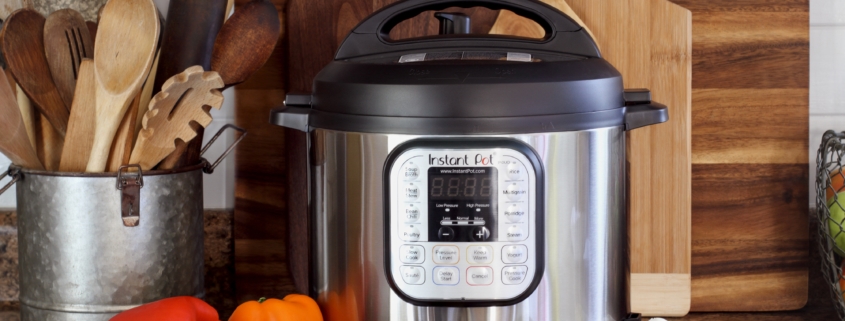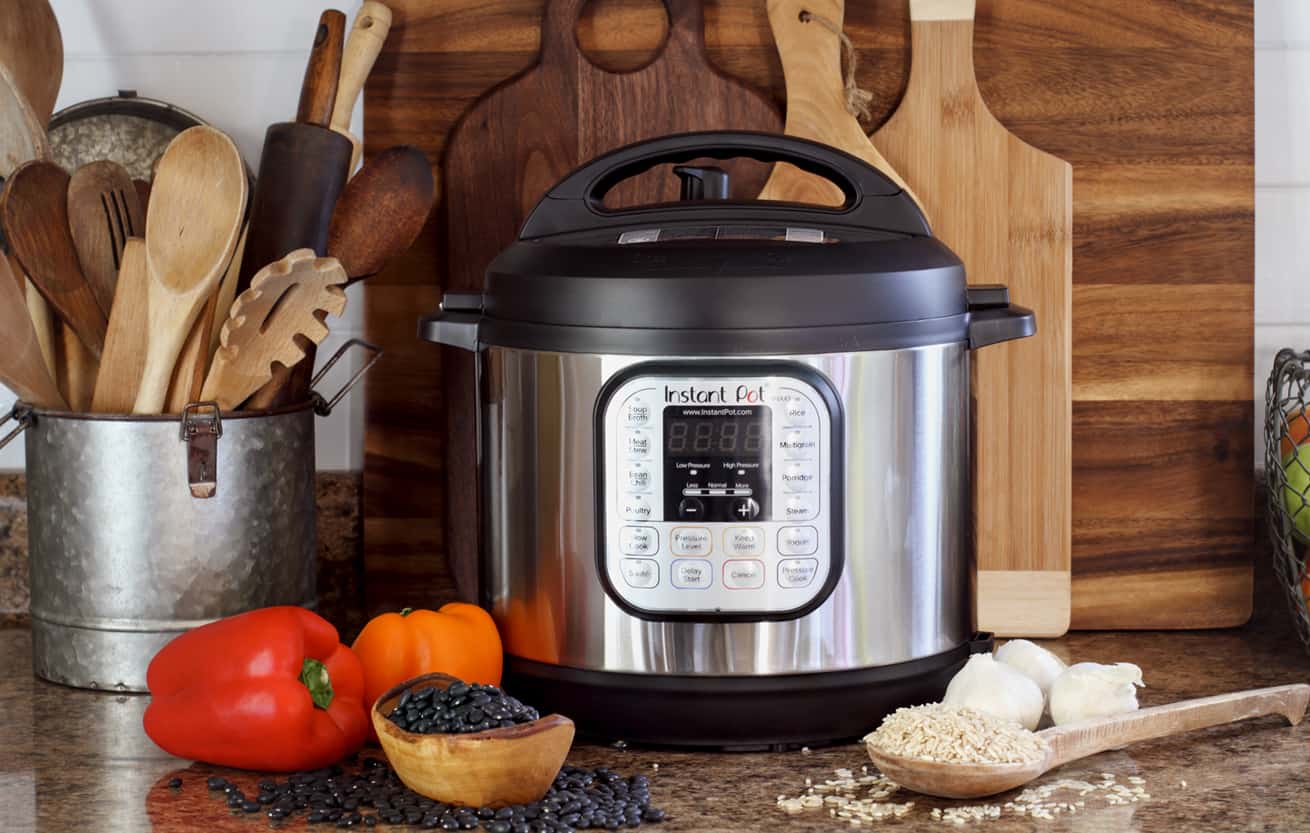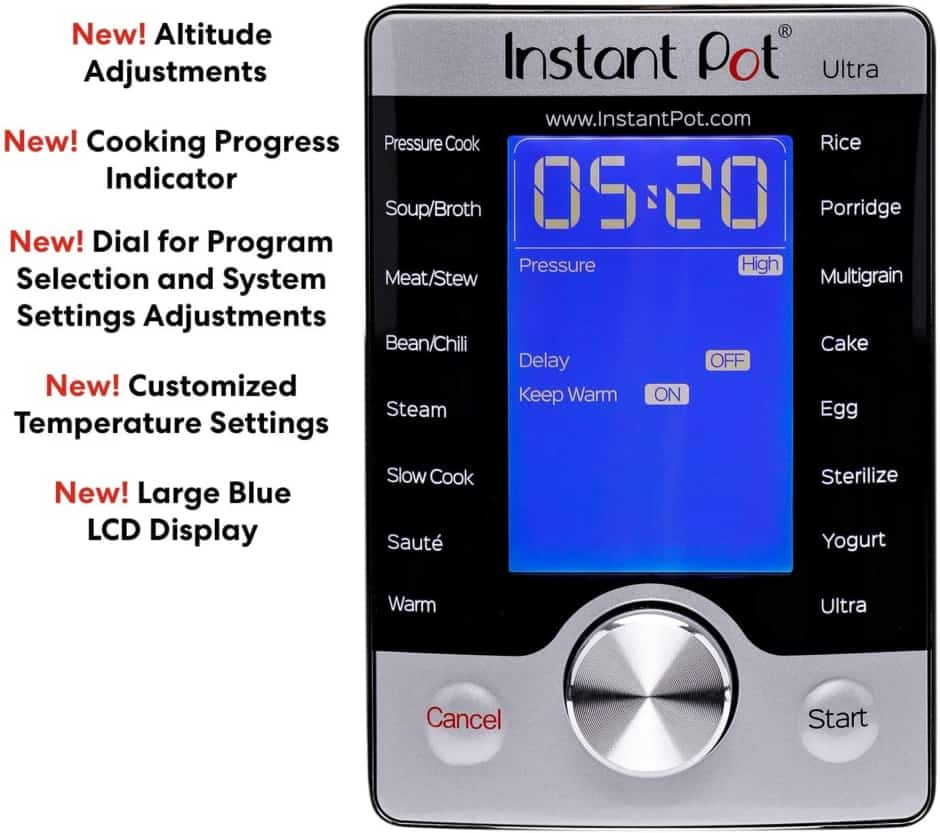How to Fix Instant Pot Slow Cooker Settings
Even before we get started let me say without hesitation that I love my Instant Pot. I don’t know how I ever got along without it. Despite the fact that Instant Pot offers a slow cook option, I also own and frequently use my slow cooker. Instant Pot is fabulous but its slow cook mode is one big disappointment. However, there are ways to work around these shortcomings!
All that said, if you have an Instant Pot, yes, you can use the slow cooker setting to make some dishes successfully. But mostly for me, it has been a crapshoot. Let’s just say that I’ve experienced far more misses than hits.
Every attempt to use Instant Pot’s slow cook option has ended in some level of disappointment. But wait! I have also discovered ways to work around Instant Pot’s slow cook shortcomings.
What is a slow cooker?
A slow cooker is a countertop appliance with a single-use. A slow cooker has three parts: The base heater, an inner crock that holds the food and sits inside the base, and a vented lid that sits on the crock but is never locked in place* to remain undisturbed while cooking. A slow cooker cooks slowly on low heat for a long time.
The heat is so low using very little energy—far less than an oven—that you can set it, leave it for many hours even while you are at work. It is that safe.
A slow cooker does not require supervision. In fact, it works best when left completely undisturbed (unless a specific recipe requires it differently). Come dinnertime, you take the lid off the slow cooker to find a perfectly prepared meal.
And if that’s not enough to love, slow cookers are super easy to use and cheap to operate. Slow cooker is a generic term. There are many brands of slow cookers. One example is Rival’s Crock-Pot, a brand name so familiar it is often used interchangeably with slow cooker.
*Some slow cookers have locks or clips to hold the lid in place but this is for transport only, so the contents don’t spill in the back of car. These clips/locks are never to be engaged during the slow cooking process.
What is an Instant Pot?
Instant Pot is a trademarked brand name for a multicooker, the same way Scotch Tape is a brand of cellophane tape, Kleenex a familiar brand for tissues—and Crock-Pot is one brand of slow cookers.
A multicooker is a kitchen appliance that does many things. But its primary purpose is pressure cooking. Pressure cooking allows you to cook things much faster, so you can make dishes like beef stew or braises in under an hour. It’s what makes the Instant Pot so popular for rushed weeknight meals.
These days, Instant Pot is available in a number of different sizes and models. Instant Pot is far and away the favorite multicooker, boasting more than 30,000 5-star reviews on Amazon. I am one of them. Instant Pot is a nearly perfect appliance—I have two, a 6 qt and 3 qt size—which I use almost daily.
Best known as a pressure cooker, Instant Pot does many other things such as sauté and cook slowly, thus the word “multi.” Instant Pot is available in a number of models and versions, the latest boasting that it is 10 appliances in one with settings for Pressure Cooker, Slow Cooker, Rice Cooker, Yogurt Maker, Cake Maker, Egg Cooker, Sauté, Sterilize, and just look how much more!
Instant Pot in Slow Cook mode
Instant Pot is fabulous, but for its one shortcoming: slow cook mode does not replicate a slow cooker. However, there are ways to work around these shortcomings. Just don’t expect that as with a traditional slow cooker, you can set it and forget it. It requires knowing how to convert a slow cooker recipe, how to adjust for time and temperature, how to create proper evaporation, and possibly the need to lower your expectations.
Recipe Conversion
Recipes specifically developed for a slow cooker most often include liquid such as water, broth or stock. It’s for a reason such as the food being cooked requires that moisture or the recipe intends that you will end up with gravy or sauce. The measurements are specific and meant to be followed.
A slow cooker is designed to allow for the necessary evaporation of some of that liquid and condensation. It’s all integral to the process. Instant Pot’s slow cooking mode does not take this into consideration. It does not contend well with necessary evaporation.
Workaround solution: Generally, reduce the liquid in a slow cooker recipe by 15% -20% when using Instant Pot in slow cook mode. This will allow for the lack of evaporation (unless you purchase an additional accessory, coming up in a bit).
Time
This is the tricky. The feature of a slow cooker that contributes greatly to its successful outcomes is the requirement to not peek. Don’t lift the lid! The rule of thumb is that for every lid-lift during the long slow cooking process, add 25 mins to the cooking time.
With Instant Pot’s slow cook mode, things are so iffy, you almost have to check by opening it to see and to test what’s going on. You might need to add another hour of cooking time! Or, you discover so much liquid you need to pour some off.
Workaround solution: Hold off until you believe the food is done cooking, then remove the lid. Using an instant-read thermometer, check the food’s internal temperature. Also if you see too much liquid, now is the time to pour that off as desired. If needed, return Instant Pot to slow cook mode for a few more minutes or even an additional hour. It’s hard to know.
Temperature
To further confuse things, the Instant Pot features three slow cooker heat settings (not including warm): Less (180°F to 190°F), Normal (190°F to 200°F), and More (200°F to 210°F). But I’m not buying it. I think the temps are lower than stated. For sure, they don’t exactly correspond to the heat settings on most slow cookers.
Slow cookers typically have three settings: Low (around 200°F), High (212°F), Warm (165°F). Although Instant Pot’s Less setting seems like it would match up with a slow cooker’s lowest setting, it seems to run at a much lower temp, which means cooking at a slower pace.
Workaround solution: To emulate a slow cooker’s “Low” setting, use Instant Pot slow cook “Normal”. For a slow cooker’s “High” setting, use Instant Pot’s “More.”
Evaporation
Instant Pot is primarily a pressure cooker with a lid that seals and locks in place—which it must have, given all that pressure! Of course, the pressure valve is left open while using Instant Pot as a slow cooker or else you would be pressure cooking. That allows for some amount of evaporation but far less than a traditional slow cooker. In my experience, that is not sufficient. Slow cookers allow for and require moisture loss through a hole in the slow cooker lid. This means your dish that is slow-cooked in Instant Pot is likely to come out swimming in liquid that was meant to be reduced via evaporation.
Workaround solution. Buy an Instant Pot tempered glass lid that has a hole for steam and evaporation to escape and does not lock into place. This will take care of the evaporation issue.
Everyday Cheapskate participates in the Amazon Services LLC Associates Program, an affiliate advertising program designed to provide a means for us to earn from qualifying purchases, at no cost to you.
More from Everyday Cheapskate
Please keep your comments positive, encouraging, helpful, brief,
and on-topic in keeping with EC Commenting Guidelines
Last update on 2024-05-05 / Affiliate links / Images from Amazon Product Advertising API




















Funny seeing this now after I attempted to slow cook chili, as opposed to using the Bean/Chili option on the Instant Pot. The temperature is indeed, much lower. I had it on high for an hour (recipe called for simmering for an hour on the stove and I had other vegetables I didn’t want to be completely overcooked), the chili wasn’t hot. At all. I almost feel like leaving the Instant Pot on Warm would have been hotter. In the end, I did end up using the Bean/Chili option on Low.
Hmm, I use my InstaPot slow cooker frequently and have never had any issues. I use it just like I used my original crock pot and follow the recipes for that. I do have the lid with the hole. I prefer to have the right tools for the right job in cooking, so when I got the InstaPot and released my long-time slow cooker, the lid seemed the logical step 🙂